This article needs additional citations for verification. (December 2009) (Learn how and when to remove this template message) |
Waterloo (Russian: ????????) is a 1970 epic period war film directed by Sergei Bondarchuk and produced by Dino De Laurentiis. It depicts the story of the preliminary events and the Battle of Waterloo and is famous for its lavish battle scenes. It was a co-production between the Soviet Union and Italy, and was filmed on location in Ukraine.
| Waterloo (????????) | |
|---|---|
British DVD cover | |
| Directed by | Sergei Bondarchuk |
| Produced by | Dino De Laurentiis |
| Screenplay by |
|
| Story by | H. A. L. Craig |
| Starring |
|
| Music by |
|
| Cinematography | Armando Nannuzzi |
| Edited by | Richard C. Meyer |
Production company |
|
| Distributed by |
|
Release date |
|
Running time | 134 / 123 min |
| Country | Italy Soviet Union |
| Language | English |
It stars Rod Steiger as Napoleon Bonaparte and Christopher Plummer as the Duke of Wellington with a cameo by Orson Welles as Louis XVIII of France. Other stars include Jack Hawkins as General Thomas Picton, Virginia McKenna as the Duchess of Richmond and Dan O'Herlihy as Marshal Ney.
Screenplay
In 1814 French Emperor Napoleon Bonaparte, facing certain defeat at the hands of Britain, Austria, Prussia and Russia (the Sixth coalition), abdicates at the demand of his marshals. He is banished to Elba with 1,000 men, but escapes and returns to France. Ney, now serving the monarchy of Louis XVIII of France, is tasked with recapturing him, but he and his army defect to Napoleon. King Louis flees, Napoleon triumphantly enters Paris, and the European powers declare war.
The Prussian von Muffling interrupts the Duchess of Richmond's ball to warn the Duke of Wellington that Napoleon has invaded Belgium to defeat the Allied forces before they can unite. Realising that Napoleon has got between himself and the Prussians, Wellington decides to halt the French at Waterloo.
The French fight the British to a draw at Quatre-Bras, but defeat the Prussians at Ligny. Field Marshal Blücher rejects the advice of his Chief of Staff, General Gneisenau to retreat and instead moves north to Wavre to keep contact with Wellington. Napoleon, enraged that Ney has let Wellington withdraw to ground of his choosing, directs 30,000 men under Marshal Grouchy to pursue Blücher and keep the Prussians from rejoining the British, while he leads his remaining force against Wellington.
The battle of Waterloo, delayed to let the ground dry after the previous night's storm, starts shortly after 11:30 am with cannon fire from the French. Napoleon launches a diversionary infantry attack on Wellington's right flank, the Chateau of Hougoumont, but Wellington refuses to divert forces. Napoleon then attacks the allied left with d'Erlon's infantry corps. General Picton, in civilian dress having lost his uniform when his mule was lost, successfully halts the attack but is killed. Ponsonby's cavalry brigade, the renowned Union brigade, including the famous Royal Scots Greys, pursue the French, but go too far across the battlefield and become isolated from the rest of the Allied force, and are thus cut to pieces by Napoleon's lancers. Ponsonby himself is killed.
Napoleon realises that troops spotted emerging from the woods to the east are Prussians (Blücher's army), not French (Grouchy's force), but keeps this from his army. He then suffers stomach pain and withdraws temporarily, leaving Marshal Ney in command. Ney, in his desperation to win before Prussian intervention, misinterprets a reorganisation of the Allied line as a retreat and leads a cavalry charge, which is repelled with heavy losses by allied infantry squares.
Napoleon returns and rebukes his marshals for letting Ney attack without infantry support. However he hopes that Wellington's line has been worn down. The British strongpoint of La Haye Sainte falls, and Napoleon sends the Imperial Guard for the decisive blow. As they advance they are repulsed by Maitland's Guards Division, who were lying unseen in the grass on the reverse of the slope. The repulse of the Guard devastates French morale, and the arrival of the Prussians makes matters certain. After refusing to surrender, the Imperial Guard squares are annihilated with point-blank artillery fire.
After the battle, Wellington wanders among the piles of dead, lamenting the cost of victory. At the same time Napoleon, who had declared that he would die with his men, is dragged by his marshals from the field and later departs in a carriage for Paris.
- Rod Steiger as Emperor Napoleon I of France
- Christopher Plummer as Field Marshal Arthur Wellesley, 1st Duke of Wellington
- Orson Welles as King Louis XVIII of France
- Jack Hawkins as Lieutenant-General Sir Thomas Picton
- Virginia McKenna as Charlotte Lennox, Duchess of Richmond
- Dan O'Herlihy as Marshal Michel Ney
- Rupert Davies as Colonel Alexander Gordon, 4th Duke of Gordon
- Philippe Forquet as Brigadier-General Charles de la Bédoyère
- Gianni Garko as Major-General Antoine Drouot
- Ivo Garrani as Marshal Nicolas Jean-de-Dieu Soult
- Ian Ogilvy as Colonel Sir William Howe De Lancey
- Michael Wilding as Major-General The Honourable Sir William Ponsonby
- Sergo Zakariadze as Field Marshal Gebhard von Blücher, Fürst von Wahlstatt (as Serghej Zakhariadze)
- Terence Alexander as Lieutenant-General Henry Paget, 2nd Earl of Uxbridge
- Andrea Checchi as Soldier of the Old Guard
- Donal Donnelly as Corporal O'Connor (as Donald Donnelly)
- Charles Millot as Marshal Emmanuel de Grouchy, Marquis de Grouchy
- Yevgeny Samoylov as Brigadier-General Pierre Cambronne (as Eughenj Samoilov)
- Oleg Vidov as Tomlinson
- Charles Borromel as Mulholland
- Peter Davies as Lieutenant-Colonel James Hay, Lord Hay
- Veronica De Laurentiis as Magdalene De Lancey
- Vladimir Druzhnikov as Général de Division Étienne Maurice Gérard, comte Gerard (as Vladimir Drujnikov)
- Willoughby Gray as Major William Ramsay
- Roger Green as Duncan
- Orso Maria Guerrini as Officer
- Richard Heffer as Captain Cavalié Mercer
- Orazio Orlando as Constant
- John Savident as Major-General Karl Freiherr von Müffling
- Jeffry Wickham as Colonel Sir John Colborne
- Susan Wood as Lady Sarah Lennox
- Gennadi Yudin as Grenadier Chactas (as Ghennady Yudin)
Columbia Pictures published a 28-page, full-colour pictorial guide when it released Waterloo in 1970. According to the guidebook, Italian producer Dino De Laurentiis had difficulty finding financial backers for the massive undertaking until he finally began talks with the Soviets in the late 1960s and reached agreement with the Mosfilm organization. Final costs were over £12 million (GBP) (equivalent to about U.S. $38.3 million in 1970), making Waterloo one of the most expensive movies ever made, for its time. Had the movie been filmed in the West, costs might have been as much as three times this. Mosfilm contributed more than £4 million of the costs, nearly 17,000 soldiers of the Soviet Army, including a full brigade of Soviet cavalry, and a host of engineers and labourers to prepare the battlefield in the rolling farmland outside Uzhhorod, Ukraine (then part of the Soviet Union).
To recreate the battlefield authentically, the Soviets bulldozed away two hills, laid five miles of roads, transplanted 5,000 trees, sowed fields of rye, barley and wildflowers and reconstructed four historic buildings. To create the mud, more than six miles of underground irrigation piping was specially laid. Most of the battle scenes were filmed using five Panavision cameras simultaneously – from ground level, from 100-foot towers, from a helicopter, and from an overhead railway built right across the location.
Actual filming was accomplished over 28 weeks, which included 16 days of delay (principally due to bad weather). Many of the battle scenes were filmed in the summer of 1969 in often sweltering heat. In addition to the battlefield in Ukraine, filming also took place on location in Royal Palace of Caserta, Italy, while interior scenes were filmed on the large De Laurentiis Studios lot in Rome. The battle sequences of the film include about 15,000 Soviet foot soldiers and 2,000 cavalrymen as extras and 50 circus stunt riders were used to perform the dangerous horse falls. It has been joked that Sergei Bondarchuk was in command of the seventh-largest army in the world. Months before the cameras started filming, the 17,000 soldiers began training to learn 1815 drill and battle formations, as well as the use of sabres, bayonets and handling cannons. A selected 2,000 additional men were also taught to load and fire muskets. This army lived in a large encampment next to the battlefield. Each day after breakfast, they marched to a large wardrobe building, donned their French, British or Prussian uniforms and fifteen minutes later were in position. The soldiers were commanded by officers who took orders from director Sergei Bondarchuk via walkie-talkie. To assist in the direction of this huge, multi-national undertaking, the Soviet-Ukrainian director had four interpreters permanently at his side: one each for English, Italian, French and Serbo-Croatian.
This article possibly contains original research. (August 2018) (Learn how and when to remove this template message) |
While the film portrays the events of the Hundred Days quite faithfully, including some allusions to and scenes from the Battle of Ligny and of Quatre Bras, there were a few mistakes, presumably made for artistic purposes, and some characters act as ciphers for others. In the opening scene, where the marshals are attempting to persuade Napoleon to abdicate, Marshal Soult is present: in 1814, Soult was commanding the defence of Toulouse against Wellington's Army.
At the Duchess of Richmond's ball (which itself was held in something more like a barn than the magnificent ballroom depicted), there is an entirely fictional romantic sub-plot with Lord Hay and one of the Duchess' daughters.
Perhaps the biggest inaccuracy in the movie is the battleground itself. Having had torrential rain the previous night which delayed the French attack until midday, there is little sign of this. The Union cavalry in reality, had little time to pick up the speed shown in the movie before encountering the French columns and the Household cavalry do not seem to appear in the movie at all. Further, Ponsonby, commander of the Union Brigade, is believed to have initially been taken prisoner by French cavalry, before being killed during a failed rescue attempt. In the movie, he tells the Earl of Uxbridge that Ponsonby's father had been killed in battle by lancers, not least because he had been riding an inferior horse: in fact his father had been a politician who died of natural causes back in England, and he is simply foretelling his own fate in the battle.
Unlike the Prussians in the movie, arriving at the right flank of the French force, General Bülow's 4th corps attacked at the rear-right of the French lines at the village of Plancenoit. Napoleon sent first his reserve corps (under General Lobau) and then the Second Foot Grenadiers, the second-most-senior corps of his Imperial Guard, to engage and delay these Prussians while maintaining his front line; these clashes in and around the village of Plancenoit were crucial to the battle; around 7:30 p.m., another Prussian corps under Marshal Blücher arrived on the battlefield to link with the British army on the grounds of the inn La Belle Alliance, sealing the fate of the French force.
The Duke of Gordon is depicted as leading his Gordon Highlanders into battle, and is described by the Duchess of Richmond as "uncle": in fact, he is a composite character, representing the contributions of several members of the House of Gordon. The Duke at the time, the founder and colonel of the regiment, was the Duchess of Richmond's father, and he saw no active service overseas during the Napoleonic Wars; his son and the Duchess's brother, the Marquis of Huntly (later the 5th Duke) was a distinguished general, but held no command in the campaign, although anecdotal evidence suggests that he arrived during the aftermath of the battle; the senior representative of the family at the battle was in fact the Duchess's own twenty-three-year-old son, the Earl of March, who would eventually become the 5th Duke's heir in 1836, and who served as a major and an aide de camp to the Duke of Wellington; another branch of the family was represented by another ADC, Colonel Sir Alexander Gordon, aged twenty-eight or twenty-nine, the brother of the Earl of Aberdeen; in reality, both were young men similar in age and duty to Lord Hay. The field commander of the Gordon regiment during the campaign, Lieutenant Colonel, John Cameron of Fassiefern, had be
Watch movie Waterloo 1970 Film online on Amazon
Watch movie Waterloo 1970 Film online
Watch The Movie On PrimeAaj Aur Kal Full HD Movie Download
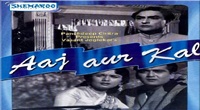
Naache Nagin Gali Gali Full HD Movie Download
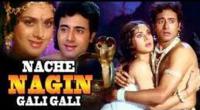
Anand Math Full HD Movie Download
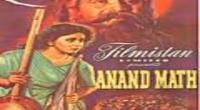
Meri Pyaari Bahania Banegi Dulhania Full HD Movie Download

Bhanwar Full HD Movie Download
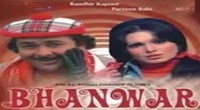
Amar Deep Full HD Movie Download
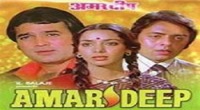
Ganda Hendathi Full HD Movie Download

Vat Pahte Sunechi Full HD Movie Download
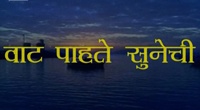
Carnival Full HD Movie Download

The Killing Jar Full HD Movie Download
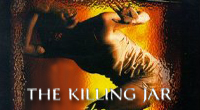
Adade Aadram Full HD Movie Download
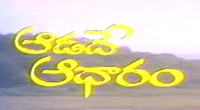
Family Full HD Movie Download

Akhari Kshanam Full HD Movie Download
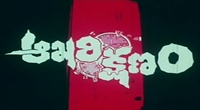
Saakshi Full HD Movie Download
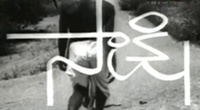
Karma Police Full HD Movie Download
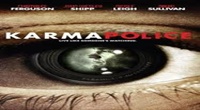
Happy Feet Full HD Movie Download

Aruvadai Naal Full HD Movie Download

Oka Chinna Maata Full HD Movie Download

Ayaash Full HD Movie Download
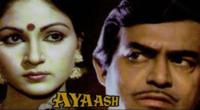
China Town Full HD Movie Download
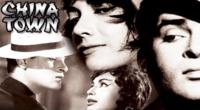
Mujhse Dosti Karoge Full HD Movie Download

Download latest Movie from bollywood
- 1> baaghi 3
- 2> THE SKY IS PINK MOVIE FULL STORY AND REVIEW
- 3> Luka Chuppi
- 4> TO ALL THE BOYS I’VE LOVED BEFORE
- 5> Kabir Singh
- 6> Street Dancer 3D
- 7> Simmba
- 8> Gone Girl
- 9> The Girl Who Lived
- 10> Ludo
- 11> DILWALE DULHANIA LE JAYENGE
- 12> GUILTY
- 13> The Godfather
- 14> Adventures of Rusty
- 15> Sooryavanshi
- 16> Satyameva Jayate 2
- 17> Thappad
- 18> Bhool Bhulaiyaa 2
- 19> KGFChapter 2
- 20> Mardaani 2
- 21> Pinjar
- 22> Shivaji maharaj
- 23> Ek Villian 2
- 24> Hungama 2
- 25> Divergent
- 26> Mumbai Saga
- 27> The Internship
- 28> HIT (telugu)
- 29> Panga
- 30> The perfect date
- 31> 16 December
- 32> Gopala Gopala (Telugu)
- 33> Brahmastra
- 34> Gangubai Kathiawadi
- 35> Manmadhudu
- 36> Nenu local
- 37> Mahanati
- 38> Shatamanam bavathi
- 39> Lagaan
- 40> After
- 41> MOM
- 42> Shamshera
- 43> Raguvaran BTech
- 44> Khakee
- 45> The villain
- 46> OM
- 47> Mr. perfect
- 48> Bueatifull mind
- 49> Hichki
- 50> Gabbar Singh
- 51> Jogi
- 52> Before Sunrise
- 53> Before Sunset
- 54> Before Midnight
- 55> The Big Bull
- 56> Top Gun: Maverick
- 57> The Purge
- 58> The Sky is Pink
- 59> Laxmmi Bomb
- 60> Sadak 2
- 61> Sufna
- 62> Prithviraj
- 63> PK
- 64> Coolie No 1(2020)
- 65> Black Widow
- 66> Dear Zindagi
- 67> Dil Bechara
- 68> PHIR HERA PHERI
- 69> WAR
- 70> Dostana
- 71> RRR: Roudram Ranam Rudhiram
- 72> Maidan
- 73> Dabbang 3
- 74> Chhalaang
- 75> life as we know it
- 76> SherShaah
- 77> Sandeep Aur Pinky Faraar
- 78> Event Horizon
- 79> 83
- 80> Radhe: Your Most Wanted Bhai
- 81> Gunjan Saxena: The Kargil Girl
- 82> Mr India
- 83> Vivah
- 84> Anokha Bandhan
- 85> Ghost
- 86> Bhoot: Part One - The Haunted Ship
- 87> Haseen Dilruba
- 88> Laal Singh Chaddha
- 89> Qismat
- 90> Rajput
- 91> Drive
- 92> Dil Chahta Hai
- 93> Dil Ki Baazi
- 94> Dil Ka Rishta
- 95> Teesri Manzil
- 96> Dil
- 97> Love Aaj Kal
- 98> Khaali Peeli
- 99> Bunty Aur Babli 2
- 100> Atrangi Re
- 101> Gulabo Sitabo
- 102> Jodi
- 103> Suraj Pe Mangal Bhari
- 104> Deewana
- 105> Attack
- 106> Sardar Udham Singh
- 107> Toofan
- 108> THE LOVEBIRDS
- 109> Jersey
- 110> Ginny Weds Sunny
- 111> Thalaivi
- 112> Shiddat
- 113> Angels vs Zombies
- 114> Koi Mil Gya
- 115> Thank God
- 116> Bhuj: The Pride of India
- 117> Hum Aapke Hain Kaun
- 118> The Platform
- 119> Bird Box
- 120> Roohi Afzana
- 121> Torbaaz
- 122> Nikamma
- 123> World War Z
- 124> Extraction
- 125> Train to Busan
- 126> Life of Pi
- 127> SHAADI MEIN JROOR AANA
- 128> Himmat Aur Mehnat
- 129> To All The Boys: P.S. I Still Love You
- 130> Mimi
- 131> Good Newwz
- 132> Shubh Mangal Zyada Saavdhan
- 133> Raabta
- 134> Harry Potter and the Philosopher's Stone
- 135> Harry Potter and the Chamber of Secrets
- 136> Chhapaak
- 137> War of the Worlds
- 138> Harry Potter and the Prisoner of Azkaban
- 139> Harry Potter and the Goblet of Fire
- 140> MURDER MYSTERY
- 141> Shakuntala Devi
- 142> Bachchan Pandey
- 143> Jayeshbhai Jordar
- 144> Sheer Qorma
- 145> Saina
- 146> 'O' Pushpa I hate tears
- 147> Kedarnath
- 148> MS Dhoni The Untold Story
- 149> Chhichhore
- 150> Badhaai Ho
- 151> Unstoppable
- 152> Oz the Great And Powerful
- 153> The Girl on the Train
- 154> Haathi Mere Saathi 2020
- 155> The Conjuring: The Devil Made Me Do It
- 156> Gandhi Se Pehle Gandhi
- 157> The Song of Scorpions
- 158> Srimanthudu
- 159> Hello Guru Prema Kosame
- 160> Beauty and The Beast
- 161> Black Panther
- 162> Charlie and the Chocolate Factory
- 163> Bole Chudiyan
- 164> Fidaa
- 165> Duvvada Jagannadham
- 166> Bruce Lee: The Fighter
- 167> Hyper
- 168> Yaara
- 169> Red (2020)
- 170> Shivam
- 171> That Is Mahalakshmi
- 172> Nishabdham
- 173> Aashram 2020 web series
- 174> Laxmii
- 175> Mismatched
- 176> STUDENT OF THE YEAR 2
- 177> NAIL POLISH
- 178> Ramprasad Ki Tehrvi
- 179> KAAGAZ
- 180> 12 o Clock
- 181> The Power
- 182> bolo hau
- 183> Tribhanga
- 184> JAMUN
- 185> Madam Chief Minister
- 186> Maasaab
- 187> Aadhaar
- 188> Tanhaji
- 189> Bhaagi 3
- 190> Bhootnath
- 191> MALANG
- 192> Jai Mummy Di
- 193> Haathi Mere Saathi 2021
- 194> Shakeela
- 195> Unpaused
- 196> Annayya
- 197> Vamsoddharakudu
- 198> Mrugaraju
- 199> Narasimha Naidu
- 200> Sankranti
- 201> Manasu Maata Vinadhu
- 202> Anjaane
- 203> Apaharan
- 204> Bachke Rehna Re Baba
- 205> Bewafaa
- 206> Roohi
- 207> Radhe
- 208> Zindagi Khoobsoorat Hai
- 209> Yeh Mohabbat Hai
- 210> Yeh Kya Ho Raha Hai?
- 211> The Tomorrow War
- 212> DehradunDiary
- 213> Meri Shaadi Karaoo
- 214> Matruu Ki Bijlee Ka Mandola
- 215> No One Killed Jesica
- 216> Aag Ka Goola
- 217> Eight Million Dollars
- 218> Three Hundred
- 219> Cats and Dog
- 220> Decoy
- 221> Gold Rush
- 222> You Have Got Mail
- 223> Final Destination three
- 224> Tofan
- 225> Jungle
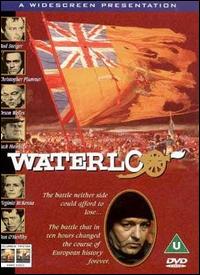 Story of movie Waterloo 1970 Film :
Story of movie Waterloo 1970 Film : 